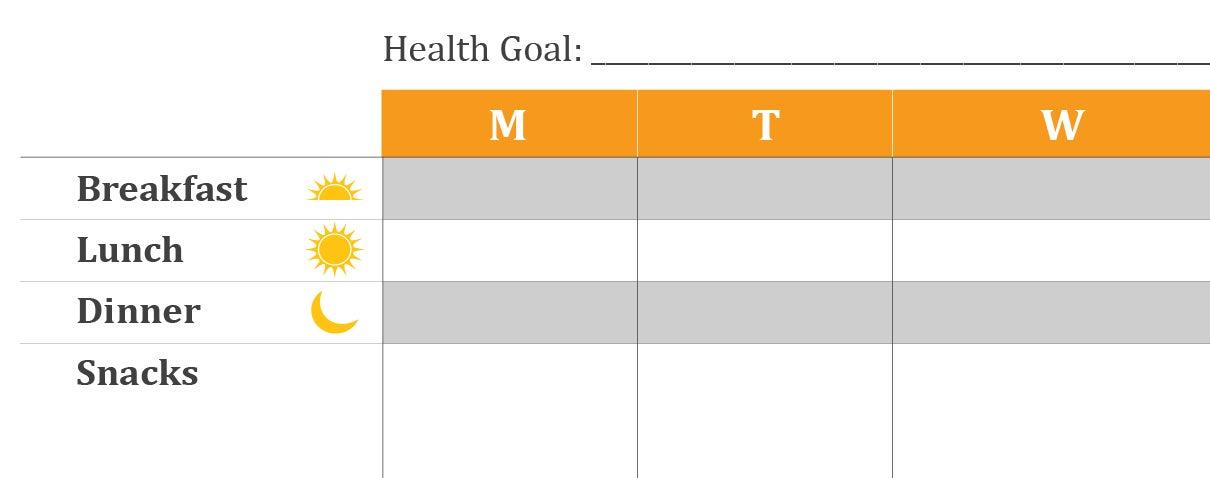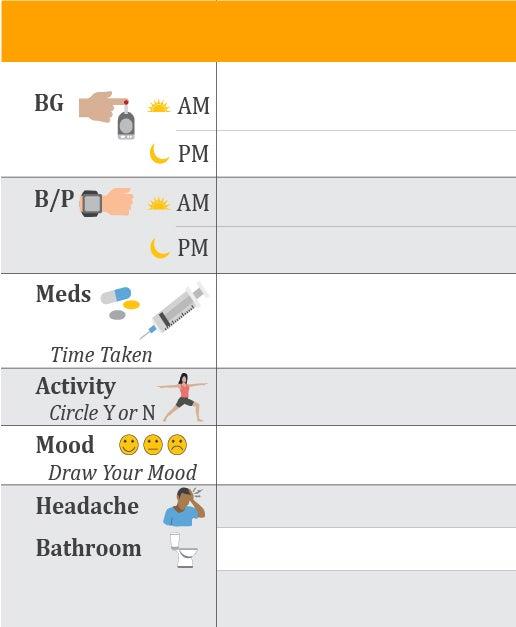How to Track Your Chronic Disease and Symptoms Through an Easy-to-Use Tool
4 min read

Related Topics
Every day, millions of people with chronic conditions struggle to manage their symptoms. From diabetes and arthritis to lung disease and obesity, 93% of older adults manage one chronic disease and 79% manage two or more conditions. And it's no secret that chronic diseases affect a person’s quality of life, especially as they age.
How lifestyle changes can affect chronic disease management
Chronic disease management is possible and can be achieved through innovative programs and solutions. Low-cost chronic disease self-managment programs are available to help older adults (and their caregivers) develop skills and coping strategies to manage their symptoms. Effective self-management oftent requires more than just following a strict diet but other lifestyle changes, including staying on top of medications, increasing physical activity, eating balanced meals, and other factors like stress management and getting enough sleep.
But how do older adults managing multiple chronic conditions? This can be challenging for any one individual. And as community health workers (or CHWs) and program directors from our Aging Services Technical Assistance Resource Center have learned, the task is much taller for Hispanic/Latino older adults and their caregivers.
Chronic disease: The different degrees of illness among Hispanics/Latinos
Health disparities in rates of diabetes and other chronic conditions exist among racial and ethnic minority groups in the United States, particularly among Hispanics/Latinos. Although chronic illnesses affect Americans of all socioeconomic statuses, races, cultures, and ethnicities, the impacts of these conditions are not distributed evenly. Hispanics/Latinos are at higher risk of having conditions such as type 2 diabetes as compared to other ethnic groups (80% compared to non-Hispanic whites.1)
Chronic illnesses among Hispanics and Latinos can be partly attributed to certain cultural traditions and dietary choices made around food and lifestyle. However, in many vulnerable and predominantly Spanish-speaking communities, inadequate access to quality education, a lack of social support systems, poor access to medical care, and certain cultural beliefs contribute immensely to the risk of developing chronic conditions, as well as experiencing additional complications from their conditions.2
This is especially true for older Hispanic and Latino adults as they often have more than one chronic condition to manage (39%), but are using fewer disease management services than other racial and ethnic groups in the US.3 Further, for many Hispanic/Latino older adults, there's a preference to remain in their own homes or that of a family member’s as they age. This often means that the challenge of managing multiple chronic conditions is often left to a family member that may also be “sandwiched” between caring for their smaller children and the older adult.4
How to manage multiple chronic conditions through a free, easy-to-use tracking tool
For over three decades, MHP Salud has established and developed Community Health Worker (CHW) programs across the country to improve the health status of Hispanic and Latino communities. Through the important work (and knowledge gained) from CHWs implementing chronic disease self-management programs in Hispanic/Latino communities, MHP Salud was able to create a free, easy-to-use chronic disease self-management tool.
This new tool helps older adults (and their caregivers) keep track of the management of their chronic condition(s), including providing a weekly snapshot or overview of an individual’s health and health concerns. Although it was created with the Hispanic/Latino community in mind (made possible through a Spanish version), the tracking tool can be adapted to meet the needs of any older adult or caregiver who's assisting an older adult with the tracking of their condition(s).
How to use MHP Salud's chronic disease self-management tool
First, users will need to register online, and once registration is complete, instructions on how to get started are made available on the reverse side of the tool. Individuals will complete each section. Sections reflect the individual’s health condition(s) that they will track and their provider information, as well as weekly or monthly goals.

In other sections of the chronic disease self-management tool, an individual will fill out information regarding blood glucose levels, blood pressure, medications, and if they were active throughout the day. There may be sections that do not apply to you or the individual you care for, in which case you can leave them blank.

Created to be a snaposhot, this tool developed by MHP Salud acts as an everyday journal, helping older adults track the management of their chronic condition(s). If there's something you need to address any with your provider at your next visit, you would have detailed notes simply from your personal tracking. Though it is meant to provide a weekly snapshot or overview of your health, it's not meant to replace any record-keeping a doctor or healthcare provider has given. Make sure you continue to adhere to your provider’s medical advice, and if you feel severely ill or have health concerns that constitute an emergency, please call 911.
To get started tracking your chronic disease, download MHP Salud's tracking tool today.
Sources
1. Understanding the growing epidemic of type 2 diabetes in the Hispanic population living in the United States, National Library of Medicine (December 4, 2018). Found on the internet at https://www.ncbi.nlm.nih.gov/pmc/articles/PMC6953173/
2. Hispanic or Latino People and Type 2 Diabetes, Centers for Disease Control and Prevention. Found on the internet at https://www.cdc.gov/diabetes/library/features/hispanic-diabetes.html
3. Older Hispanic Americans (and chronic conditions), Georgetown University's Health Policy Institute. Found on the internet at https://hpi.georgetown.edu/hispanics/#:~:text=Almost%203%20million%20of%20adults,Hispanic%20adults%20%E2%80%94%20have%20multiple%20conditions
4. Three Ways COVID-19 has Affected Hispanic and Latino Caregivers of Older Adults, MHP Salud (January 2022). Found on the internet at https://mhpsalud.org/covid19-olderadultcare/
This project was supported, in part by grant number 90CSSG0048 from the U.S. Administration for Community Living, Department of Health and Human Services, Washington, D.C. 20201. Grantees undertaking projects under government sponsorship are encouraged to express freely their findings and conclusions. Points of view or opinions do not, therefore, necessarily represent official Administration for Community Living policy.




